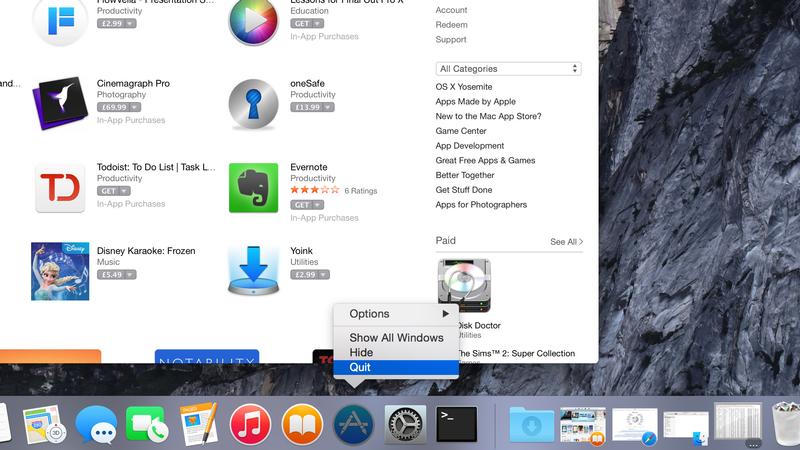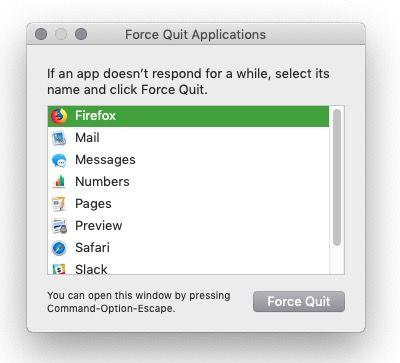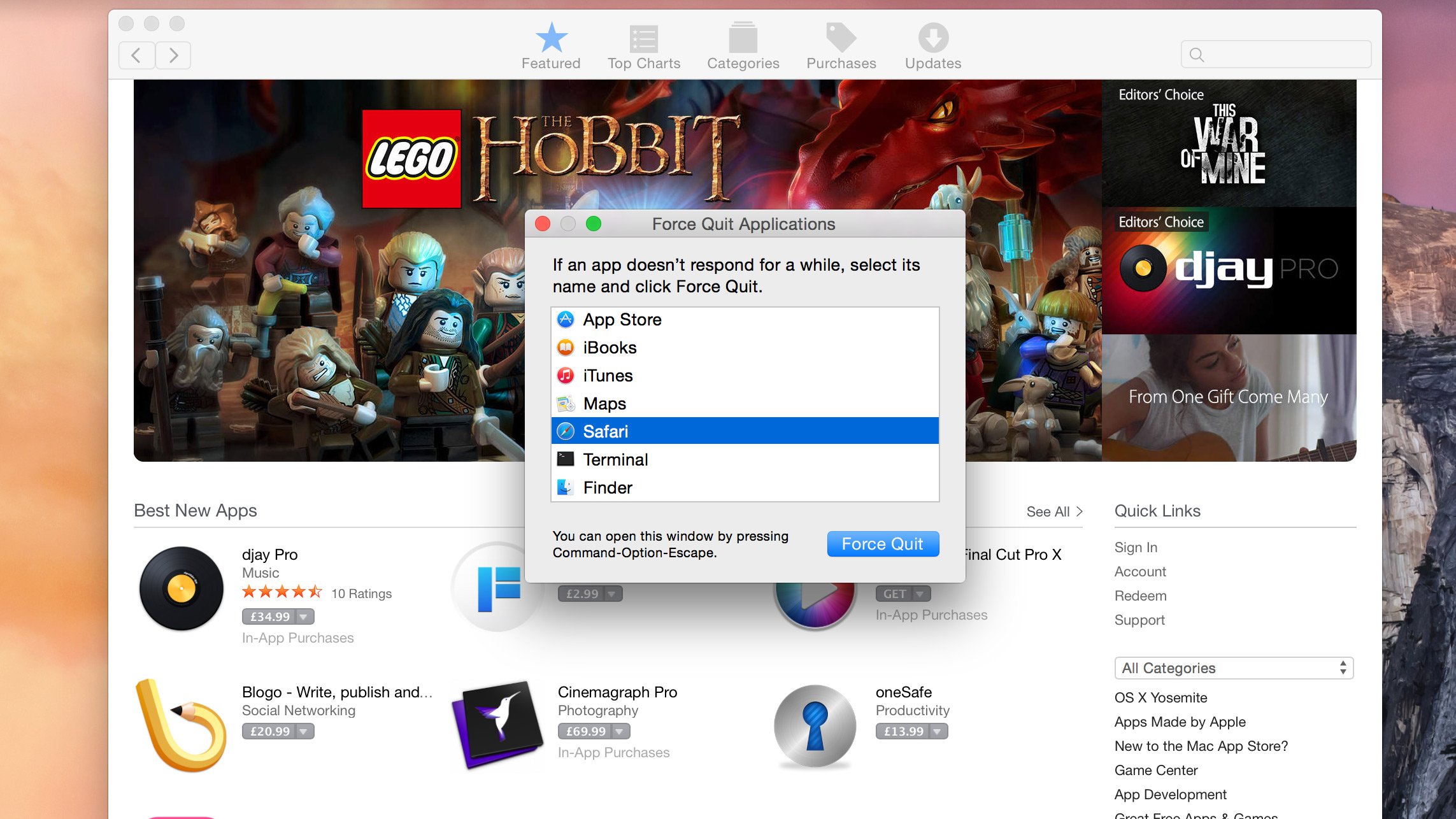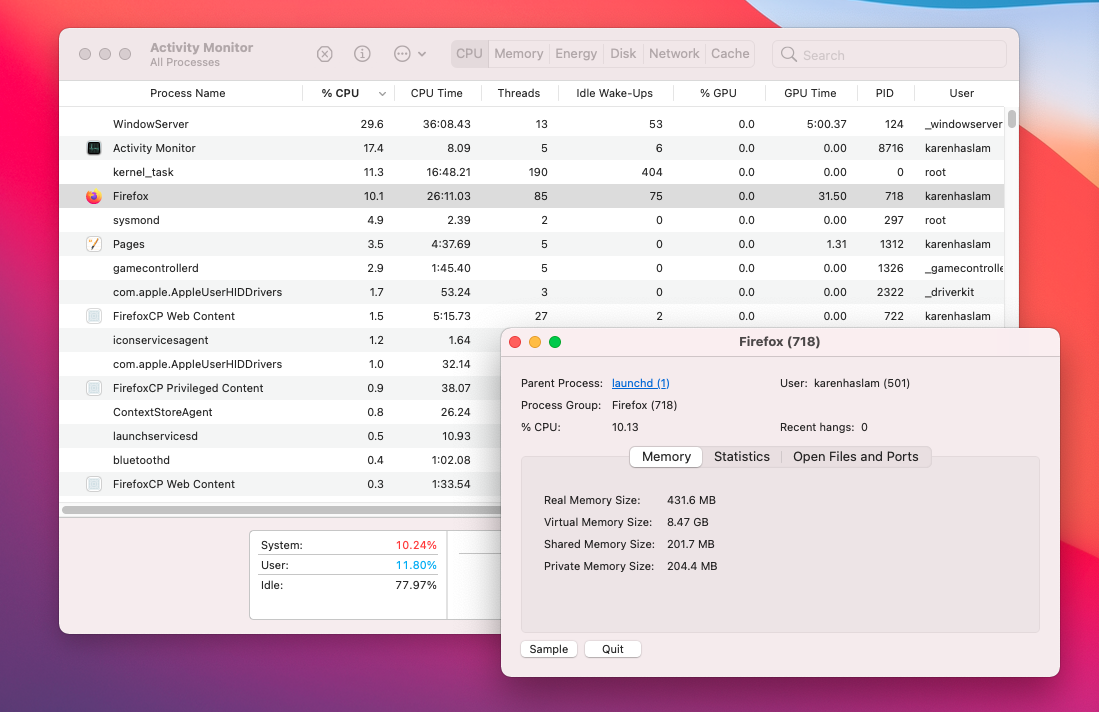Has one of the apps on your Mac frozen? Are you seeing the ‘spinning beach ball’? Has your mouse stopped working? All these are symptoms that suggest an app has stopped working and you need to Force Quit before you can carry on. But how do you Force Quit on a Mac? Or, if you are used to Windows, how do you control alt delete on a Mac?
Windows users will be very familiar with the classic Ctrl+Alt+Delete key combination, the measure of last resort when an application has become unresponsive. Pressing Ctrl+Alt+Delete on a Mac will do nothing, that’s if you can even find those keys: on some Mac keyboards the Alt key is called Option, the Control key is there, but it’s equivalent on a Mac is really the Command key, and there isn’t usually a key marked as Delete.
So how do you Force Quit a Mac? There’s actually more than one way to Force Quit an app on a Mac. Here we’ll show you a variety of ways to find the problematic programs and shut them down, without the need to resort to the power button.
If you’re finding that apps are becoming unresponsive on a regular basis, and that it’s not always the same one, then it might be worth backing up all your data and doing a clean install of macOS. It’s a rather nuclear option, but could save you a lot of headaches in the long run.
You might also find it helpful to check out How to fix a frozen Mac.
Before we begin we will quickly summarise the five different ways to force quit on a Mac:
- Right click on the app in the Dock
- Click on the Apple menu and select Force Quit
- Press Command + Alt (or Option) + Escape
- Force Quit in Activity Monitor
- Restart your Mac
Read on for details of how to do each of the above.
Force Quit via the Dock
If an app has become unresponsive, then there’s a good chance that trying to place your mouse pointer over the menu bar at the top of the screen will result in a spinning beach ball that doesn’t allow you to select any options. You can of course give the app some time to resolve its issue, but if the problem persists then the app will need closing and launching again.
- Go to the Dock at the bottom of your screen.
- Find the icon for the app.
- Right click (or Ctrl+click) to bring up the contextual menu.
- At the bottom of this list is the Quit option. Click this and hopefully the app will close.
- If this doesn’t close the app repeat the process, but when the menu appears hold down the Alt key and the Quit option changes to Force Quit. Select this and the program should close immediately.

Force Quit via the Apple menu
There is another way to access the Force Quit command:
- Switch to an app that is working fine.
- Now click on the Apple icon in the top left of your screen.
- You can select the Force Quit option from the drop-down list.
- Don’t worry, this won’t Force Quit the app you’re currently using – it will give you a list of all currently open apps, from which you can select the frozen one (s).
- Now click on Force Quit.

Force Quit on a Mac using the keyboard
Another way to Force Quit an app is to hold down the Command + Alt (or Option) + Escape keys, this will bring up the same Force Quit Applications window as seen above.
- Press Command + Alt (or Option) + Escape
- A list will appear showing every app currently running on your system – the one you’re having problems with most likely has ‘Not Responding’ in brackets next to it.
- Highlight the app.
- Click the Force Quit button in the bottom of the window.

What to do when you can’t leave an app
In severe cases, you’ll find that you can’t actually escape from the app itself to perform the above commands. If this is the case then you still have a command you can use.
Simply hold down the Cmd + Alt (Option) + Shift + Esc buttons and macOS should close whichever app is currently the active one on your screen.
Force Quit via Activity Monitor
If you’re experiencing problems on your system, say the spinning beach ball is appearing more than normal, then one way to see what’s happening is using the Activity Monitor app.
- Open Activity Monitor (press Command + Space and start to type Activity Monitor, or going to the Finder and navigate to Applications > Utilities > Activity Monitor.)
- Once launched the Activity Monitor tool will display all the apps and services that are using the CPU, Memory, and Network among other things.
- Double-clicking on any app will bring up a separate window with even more information about the app and its current demands.
- From here you can choose to Sample the app, which gives you a report of its activities over a short period of time, but this is quite a technical procedure and the results are unintelligible for most people.
- The more useful command is the Quit button, which will of course close the app.

What to do if your Mac is frozen
Sometimes an app can get into trouble and cause your entire system to freeze. While these cases are rare, they do happen. We offer more advice about what to do if your Mac is frozen in a separate article as there can, of course, be a number of reasons why your Mac is frozen.
Should you be faced with an unresopnsive Mac due to an app that won’t force quit the only option left to you is to hold down the power button on your Mac for several seconds.
Normally when you press the power button a message is sent to your system telling it that you want to close it down. The system then usually responds by putting the machine to sleep. Holding the button down for longer will give you a dialog box with various options such as Restart, Sleep, or Shut Down. But in a severe system crash, even this option might not appear.
So the last resort is to hold the button down until the machine cuts off the power completely. Now, while this will allow you to reboot and get back into your Mac, because of the sudden nature of the shutdown you may find that any unsaved data will be lost.
It’s not perfect, but sometimes it’s the only way to get back up and running.
Note, if you want to prevent the application that was causing the problem from opening up again when the computer restarts make sure that the box beside Reopen windows when logging back in is not ticked!

We look at restart the Finder in a separate article.
Wondering how to copy and paste on a Mac?
